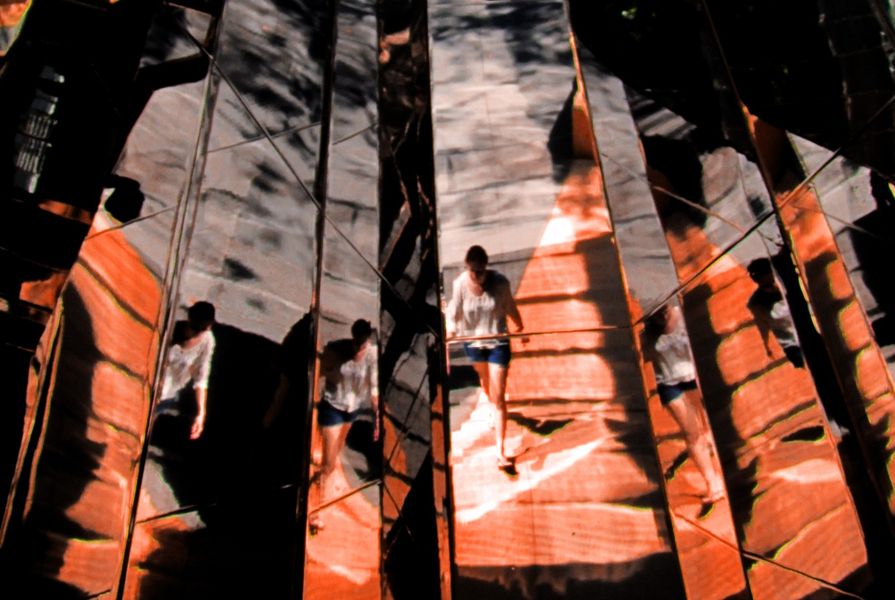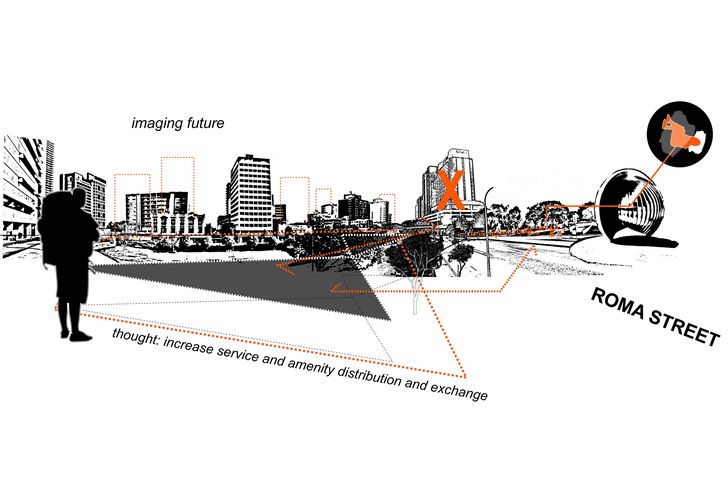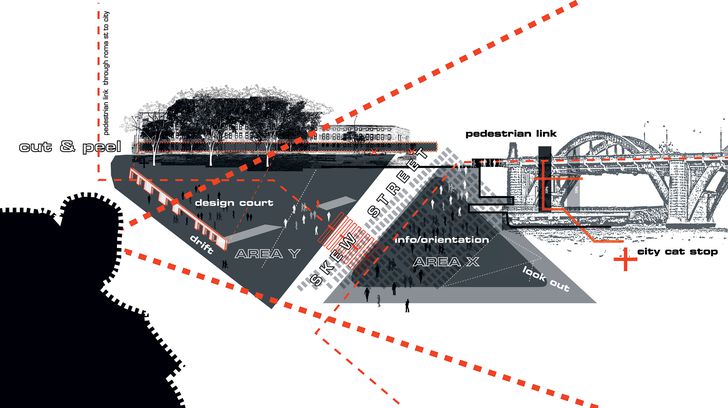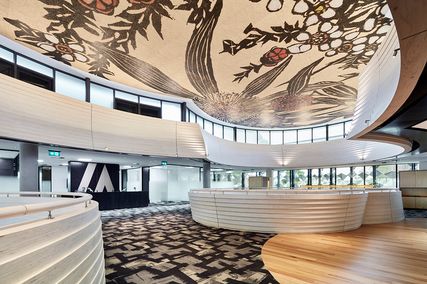
Designer / enquirer, Marisha McAuliffe.
Marisha McAuliffe is a PhD candidate and lecturer at the Queensland University of Technology School of Design. I first met Marisha in 2008 when I was a subject for one of her PhD research interviews. She asked questions about my creative process that I had never been asked before and haven’t been asked since.
Working through mind.
Image: Christina Waterson
Christina Waterson: How did you get into this type of research?
Studio tutorials.
Image: Christina Waterson
Marisha McAuliffe: My interest was sparked while teaching design, rather than during professional practice. I found many of my Design Studio students were “in another world” when they were designing. I realized I did not know how to ask the students about it, and that if I tried they simply couldn’t explain it.
Where were they going? And like them, why couldn’t I articulate the process? If we knew more about it could we encourage it in a studio? I found after establishing initial student focus groups and a lot of preliminary work that I needed to embark on a formal study of established practitioners to gain a clearer picture of what was happening.
CW: Why was it important to survey established practitioners rather than students?
MM: Designers with at least five years experience or a project under their belt understand the link between their personal contextual immersion and their projects. More experienced designers were aware of its value once they had walked through their completed projects. They speak clearly about what they were thinking during the process and how real it was in the outcome.
I sent out questionnaires to 650 practicing designers throughout Australia, South East Asia and the United Kingdom. They were graphic, landscape and interior designers, architects and project managers. In all, I received seventy-five complete responses.
Mind mapping.
Image: Christina Waterson
CW: Why do you think that was?
MM: Often people don’t know how to respond because they have never spoken about their personal design process at this deep level.
CW: Your PHD research focuses on Presence and its relationship to imaging in the design process. So what is Presence?
MM: Presence is the feeling of being immersed in a virtual world; whether that is an imagined or digital world. For example, when reading a book you may see the action, the characters and their surroundings in your mind’s eye, while the medium (in this case the book) disappears. That’s called “literary presence.”
Walking through mind.
Image: Christina Waterson
Designers visit a place where they witness the space of their projects within their mind’s eye. But it’s not just a static image. They experience it; walk through and around in it. The project site plays an important role in feeding this experience. My research investigates a possible connection between the imagined aspect of designing and “presence.” To date there’s been no link made. I’m wondering how far people go into these imagined spaces when they design, and whether it lasts for the duration of the project.
CW: Are there different degrees to the level of engagement or experience?
MM: Yes there are two main types. The first is Involved Contextual Immersion. It is being there by yourself or with others, either in the space or as the object. The second is Impartial Contextual Immersion. It means being there vicariously or seeing the object or space from a distance. There are also levels in between where you are within the space then outside of it to different degrees.
CW: Is the process the same for all creatives?
MM: While it varies for different individuals in different creative fields, there are some commonalities. Designers (landscape, interior, architects) usually create environments for someone else; namely clients. Therefore a project’s success depends on whether the client can experience “presence” in the finished outcome. Artists are a little bit different in this respect, because they have the ability to create and experience at the same time.
Mind mapping.
Image: Christina Waterson
Individuals have different triggers. To flip into their creative headspace some people follow a ritual (e.g. coffee, clearing desk). Some people need silence, while others need music or a particular light. Happy accident or not, environmental factors help individuals to get into their creative mode. It’s funny really because the open plan workplace doesn’t allow for this level of control or individuality.
CW: Did you find evidence of a similar process within other professions?
MM: Yes. It’s different for authors, mathematicians or aircraft engineers (for example) and in part depends on the media they use to express and realize their ideas. Mathematicians don’t have the spatial experience that designers have. Some experience text or equations on a blackboard in 2D in the mind’s eye.
Study environments.
Image: Christina Waterson
CW: What do you see as the biggest obstacle for designers?
MM: The main obstacle in design is that we don’t understand this process enough yet to fully integrate it in education and practice. We do try, but not to such an individual or customised level. We teach students as a group. Creating is very individual. Each person goes through his or her own process. There is also limited time.
CW: How can we expect other people in society to value what we do if we as designers and creative thinkers can’t articulate the process?
MM: Exactly. Within practice no time is allocated to it. It’s something that “just happens.” Many people think that you are either magically creative or you’re not. And for this reason no dollar value has been assigned to it. We as designers don’t value or discuss it enough. It is, however, what guides the realization of our ideas to make projects of quality. And yes (to put it in perspective) people pay a lot of money to replicate the “presence” experience in the more immersive game world. Escapism is worth a lot! I believe “presence” has an educational value that outshines these purely economical pursuits. And if we understand it and can encourage it, just think of the amazing outcomes for all.
The abstract for Marisha McAuliffe’s PhD entitled “Imagining in the Spatial Design Process” will be made public through The Queensland University of Technology by mid 2013. To date there has been no other comprehensive research like this. It will be of considerable benefit in offering a better understanding of our design process. Marisha’s research forms the basis of a book by the same name to be made public within the next two years.
For more information about the work, abstract and book, you can email Marisha McAuliffe.
Further Reading
Teal, R. (2010). “Developing a (Non‐linear) Practice of Design Thinking” International Journal of Art & Design Education, 29(3), 294-302.
Beaney, M. (2005). Imagination and creativity. BBC/Open University.
Folkmann, M. N. (2010). Enabling creativity. Imagination in design processes. In 1st International Conference on Design Creativity ICDC.
Liddament, T. (2000). “The myths of imagery” Design Studies, 21(6), 589-606.



























